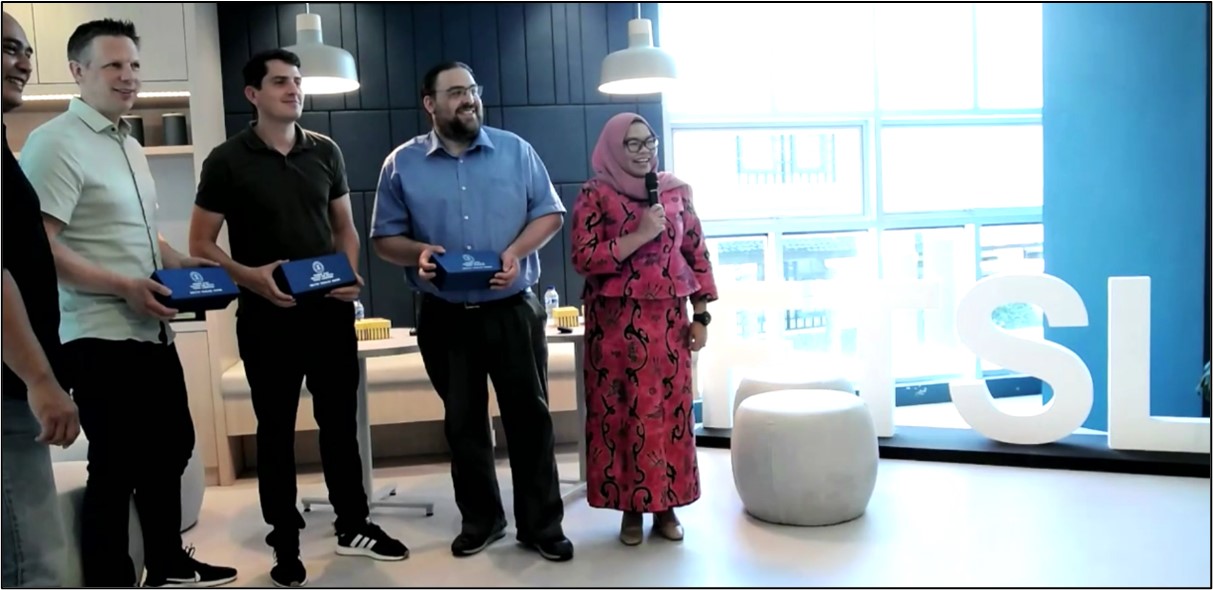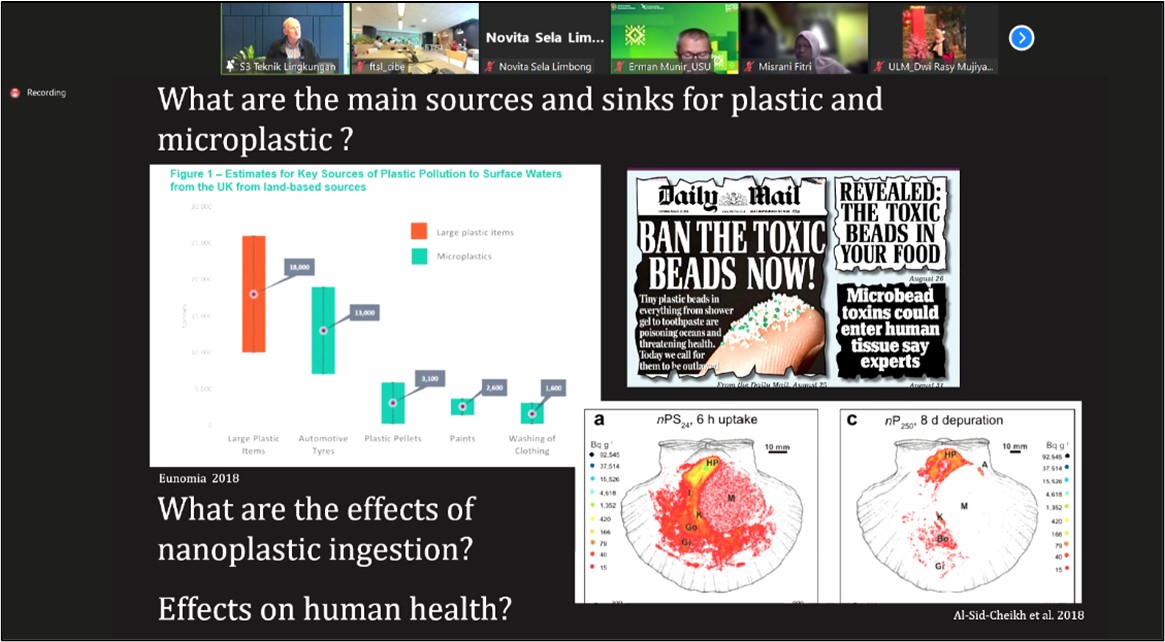AI Technology to be Used to Monitor and Guard the Ocean From Plastic Litter

BANDUNG, itb.ac.id – “For each breath you take every second, you owe it to the ocean,” said Prof. Dr. Oliver Zielinski, Head of Research Department of Marine Perception at DFKI (German Research Center for Artificial Intelligence).
On top of being the home to a wide range of species and habitats, the ocean is also functioning as the lungs of the earth. 50% of the world’s oxygen production comes from the ocean, more specifically from the photosynthesis of marine algae. In addition, 50% of the global population lives in coastal areas, relying on what the ocean provides for their source of income. Unfortunately, global warming is raising sea levels. Trash, especially plastic, is also thoughtlessly thrown away into the ocean.
Plastic production has been rapidly increasing since the last few years. It is estimated that 1.15 to 2.41 million tons of plastic waste in the ocean originate from rivers. Current global practices in dealing with plastic pollution are not sustainable, and Indonesia is no exception to this. As a maritime country with a considerable population, 80% of Indonesia’s marine litter comes from land, 30% of which is identified as plastic waste. For this reason, Indonesia needs systematic and innovative breakthroughs to monitor its waste stream.
With this objective in mind, and to raise public awareness of the increasing plastic waste, the Faculty of Civil and Environmental Engineering (FCEE) of ITB held a guest lecture on Thursday, July 7th, 2022. The class was conducted hybrid and assisted by DFKI to present a topic on the identification and monitoring of plastic waste. There were 3 invited speakers on this occasion, namely Prof. Oliver with two DFKI researchers, Dr. Christoph Tholen dan Mattis Wolf, M.Sc.
With a presentation titled "Artificial Intelligence for a Sustainable Marine Environment," Prof. Oliver hoped that the idea of AI implementation could be useful in tackling the problem of marine plastic waste in Indonesia. “At DFKI, we combine sensor technology with AI to observe and evaluate environmental conditions, as well as to identify the appropriate countermeasure options,” he added. “If we are able to recognize and measure these conditions, we can rectify them with current technology. Sensing is believing.”
Through AI-powered sensing and analysis of complex situations, planned actions and sustainable changes can be successfully realized. AI can recognize patterns in complex data and analyze the results to accomplish specific goals through flexible adaptation. Its implementation on the environment will be beneficial. Therefore, public support and approval are needed so that AI can be properly utilized as a sustainable transformation for better oceanic conditions.
One example of marine-related AI implementation is Floating Little Detection. This technology relies on machine-learning for aerial image data. Presented by Dr. Christoph with the title "Aerial Remote Sensing for Plastic Litter Detection," this noninvasive technology is able to cover a wide range of remote areas by measuring the radiation reflected and emitted from satellites or aircraft. Hence, the remote-sensing technology can provide actual data on the plastic waste situation.
Dr. Christoph added that Floating Litter Detection was performed together with drones in order to provide high-quality images that also include a scale as a size reference. These images are obtained at two levels: A (an overview of the site; situated higher) and B (a higher spatial resolution of the site; situated lower). These two images are then analyzed by an AI to obtain the inputs for the survey.
The discussion session was then continued by Mattis with the title "Artificial Intelligence for Plastic Waste Monitoring and Identification in Indonesia." He explained that plastic waste detection programs in ASEAN countries were conducted jointly by local universities and companies. By using AI-based waste analysis, in addition to drones and action camera surveys, remote sensing can be utilized to conduct field surveys. The images generated from this process will show the results of the plastic waste assessment. This assessment also includes other quantitative measurements and characterizations, such as the type of area and the classification of waste.

One successful research was conducted at the mouth of the Cisadane River. Through AI-based remote sensing, multiple types of data were successfully obtained. The data ranged from the images of the location to the characterization of waste based on its type, area, volume, and amount. The research has also shown that quick waste analysis could be scaled up to other platforms. Furthermore, the required equipment is readily and widely available. However, Mattis also warned that several factors might affect the assessment results. Some of these factors are the lighting and background of the site. “With further improvements, this model could become more accurate in its assessments.”
Reporter: Ruth Nathania (Environmental Engineering, 2019)
Translator: Ariq Ramadhan Teruna (Chemical Engineering, 2021)

scan for download




